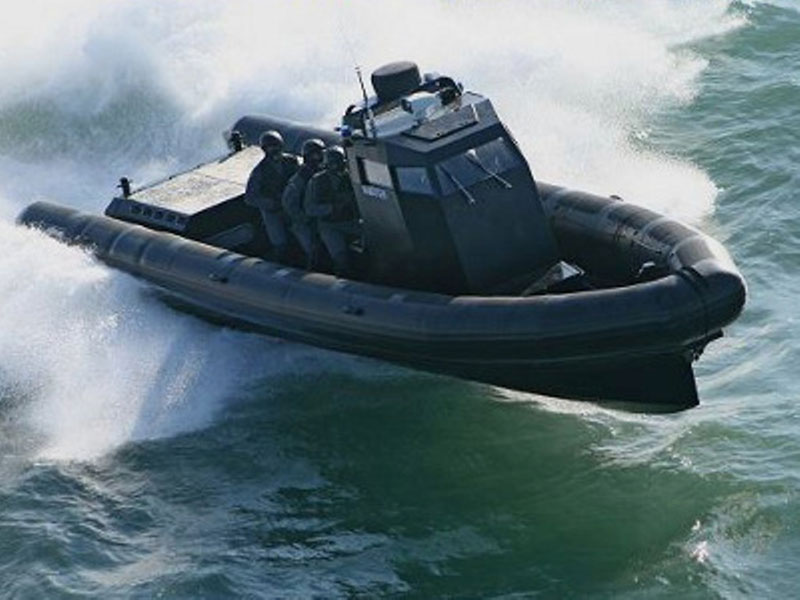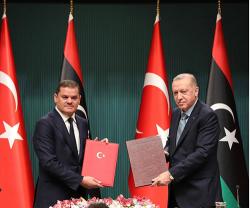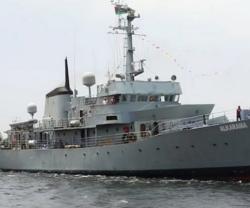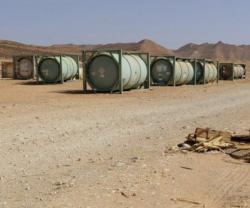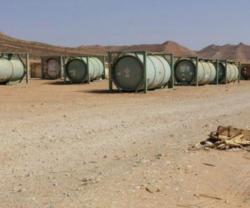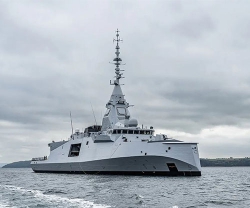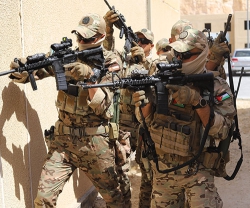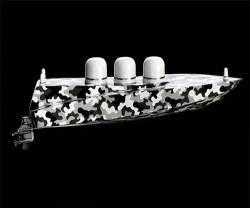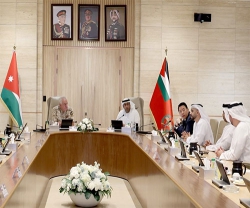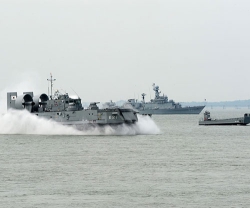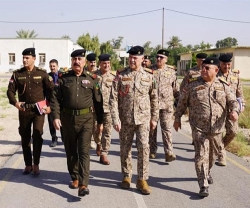When Libyan Coastguard Officer Ashraf El-Badri needs to dispatch a boat to stop illegal migrants heading for Europe, his options are limited: ask the Oil Ministry for a tug, use an ageing fishing boat or board an inflatable.
European governments are counting on officials like Badri to stop an influx of hopeful migrants from setting off from Libya's shores to reach Italy and Malta. But more than two years after Muammar Gaddafi’s fall, Libya’s Coastguard is just not up to the task.
The force does not have radar or a single helicopter, or even adequate gear for the officers who go out to sea in small inflatables - the kind of boat sometimes used for fun rafting trips in other parts of the world.
“Smugglers have guns, equipment and they often open fire. We just lack any equipment. We don't even have bulletproof vests or night goggles, which are not available in the local market,” said Badri, who heads the Coastguard in Tripoli.
Navy ships from the Gaddafi era rust away at a quay next to his office at the central Tripoli naval base. Some were damaged by NATO bombs when the alliance was helping the rebels fight Gaddafi and others have fallen into disuse through neglect.
The Coastguard says it stopped 2,200 migrants on the sea in September and October alone. But officers admit they are unable to control Libya's 2,000-km long shore.
The force has only a large inflatable boat available in Tripoli, officers said. A base in Khoms, 100 km to the east, relies on 2 fishing boats and a slightly larger inflatable.
The European Union (EU) has started training Airport officials and guards for the sea and land borders, and Italian defense firm Selex began this month setting up a satellite system to allow officers to patrol borders remotely. But Western officials are under no illusion that it will be easy to get the force up to speed anytime soon.
Libyan officials say one challenge is that political infighting has hampered funding for many government functions.
Senior defense officials are also reluctant to take the initiative to decide who to train and what equipment to order - a legacy of the Gaddafi era when all decisions were made at the top.
Diplomats say another problem is that the Defense Ministry, to which the Coastguard belongs, is dominated by multiple militias from the 2011 uprising whose rivalries are making it difficult to agree on the new structure of the force.
The Coastguard tends to run geographical sectors with little coordination with other units. There is even competition with the navy and a separate coast guard police which mainly patrols the ports - another legacy of Gaddafi, who used to play units off each other.
Most of the more than 2,000 staff are former rebels whom the government has co-opted to get armed youngsters off the streets. They are enthusiastic about the coastguard mission but lack experience and even the most basic skills. Many of them had never been to the sea before signing up.
The EU has so far trained 130 border patrol officials, including 30 coastguard officers. Italy is also training some officers and repairing 4 patrol boats from the Gaddafi era.
Libya has commissioned 10 new boats from Spain and more from South Korea but it will be years before they are built and paid for, officers say. “God willing, we will have before 2016 boats with lengths of 60 meters or more which can stay out in the sea a long time,” said Abdul-Samed.
The UNHCR says more than 23,000 people, mostly Africans, have tried leaving Libya by boat this year, triple the number in 2012. Hundreds have died on their way to Lampedusa (Italy) in the past few months.
Source: Reuters
Normal 0 false false false EN-US X-NONE AR-SA MicrosoftInternetExplorer4 /* Style Definitions */ table.MsoNormalTable {mso-style-name:"Table Normal"; mso-tstyle-rowband-size:0; mso-tstyle-colband-size:0; mso-style-noshow:yes; mso-style-priority:99; mso-style-parent:""; mso-padding-alt:0in 5.4pt 0in 5.4pt; mso-para-margin:0in; mso-para-margin-bottom:.0001pt; mso-pagination:widow-orphan; font-size:10.0pt; font-family:"Calibri","sans-serif";}
